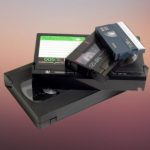 Weird Stuff
Weird Stuff  Weird Stuff
Weird Stuff  Our World
Our World 10 Ways Your Christmas Tree Is More Lit Than You Think
 Movies and TV
Movies and TV The 10 Coolest Stars to Set Sail on The Love Boat
 History
History 10 Things You Didn’t Know About the American National Anthem
 Technology
Technology Top 10 Everyday Tech Buzzwords That Hide a Darker Past
 Humans
Humans 10 Everyday Human Behaviors That Are Actually Survival Instincts
 Animals
Animals 10 Animals That Humiliated and Harmed Historical Leaders
 History
History 10 Most Influential Protests in Modern History
 Creepy
Creepy 10 More Representations of Death from Myth, Legend, and Folktale
 Technology
Technology 10 Scientific Breakthroughs of 2025 That’ll Change Everything
 Weird Stuff
Weird Stuff Ten Bizarre Facts About The Doge Meme
 Our World
Our World 10 Ways Your Christmas Tree Is More Lit Than You Think
 Movies and TV
Movies and TV The 10 Coolest Stars to Set Sail on The Love Boat
Who's Behind Listverse?

Jamie Frater
Head Editor
Jamie founded Listverse due to an insatiable desire to share fascinating, obscure, and bizarre facts. He has been a guest speaker on numerous national radio and television stations and is a five time published author.
More About Us History
History 10 Things You Didn’t Know About the American National Anthem
 Technology
Technology Top 10 Everyday Tech Buzzwords That Hide a Darker Past
 Humans
Humans 10 Everyday Human Behaviors That Are Actually Survival Instincts
 Animals
Animals 10 Animals That Humiliated and Harmed Historical Leaders
 History
History 10 Most Influential Protests in Modern History
 Creepy
Creepy 10 More Representations of Death from Myth, Legend, and Folktale
 Technology
Technology 10 Scientific Breakthroughs of 2025 That’ll Change Everything
10 Bizarre Consumer Products Pulled Within Days of Release
Some products fail slowly. Others detonate on impact.
This list is for the latter—the bizarre, ill-conceived, or prematurely hyped products that barely made it out of the gate before getting yanked from shelves, recalled in embarrassment, or mocked into oblivion. Whether due to dangerous design flaws, baffling branding choices, or just plain public confusion, these items lived fast and died faster.
From toothpaste companies that tried to feed us to lip balm that made you smell like a gas station nacho, here are 10 consumer products that didn’t just flop—they vanished in record time.
Related: 10 Marketing Stunts with Disastrous Consequences
10 Google Glass: The Coolest Tech Nobody Wanted Watching Them
When Google Glass launched in 2013, it wasn’t just a gadget—it was a revolution in wearable tech. With its minimalist frame, tiny heads-up display, and voice-activated features, Glass was positioned as the next leap in human-computer interaction. You could get weather updates in your eyeline, take hands-free photos, and even read messages without looking at your phone.
The first wave of invite-only users—”Glass Explorers”—paid $1,500 for the privilege. Google framed them as trailblazers. But instead of sparking envy, the product sparked suspicion. Almost immediately, backlash followed.
Glass wearers were banned from bars, casinos, and movie theaters over fears they were secretly recording others. Tech-savvy as it was, Glass lacked a visible “recording” light, making everyone around the user feel like a potential surveillance target. Privacy experts raised alarms, civil libertarians warned about the normalization of facial recognition, and fights even broke out in public over its use.
The term “Glasshole” was coined to describe smug wearers oblivious to the discomfort they caused. When tech blogs, comedians, and everyday users united in mocking a product still in beta, Google knew it had a problem. The company quietly pulled the consumer launch by early 2015 and pivoted the hardware for limited enterprise use. The future was watching. Nobody liked it.[1]
9 Colgate Kitchen Entrees: Minty Fresh Meatloaf, Anyone?
Sometime in the 1960s, Colgate decided that minty toothpaste and meatloaf belonged in the same grocery cart. They rolled out a line of frozen dinners called “Colgate Kitchen Entrees,” intended to capitalize on the booming convenience food market. The meals included classics like lasagna, Swedish meatballs, and Salisbury steak.
Internally, the branding seemed logical: Colgate already had trust in household hygiene. Why not household food? But the packaging was a disaster—bearing the same bright white-and-green branding as their toothpaste tubes, making it impossible for consumers to separate meatloaf from mouthwash. What’s worse is how tone-deaf the marketing proved to be.
Taste-testers in limited markets reportedly found the meals bland and off-putting, even before the branding made them nauseous. Some customers assumed the meals were healthy due to the dental brand association, only to find calorie-dense, processed TV dinners inside.
Sales were dismal, and brand confusion quickly began eroding Colgate’s main product line. Executives hit the brakes. The entrees were withdrawn almost as quickly as they’d been distributed, and the company never publicly acknowledged the misstep. Most people only know about it today from business school case studies or “worst marketing fails” slideshows. You couldn’t even brush the memory away.[2]
8 Pepsi A.M.: Breakfast Cola for the Caffeinated Commuter
In 1989, Pepsi tried to redefine breakfast by launching “Pepsi A.M.,” a cola that boasted 28% more caffeine than regular Pepsi. It was marketed as a morning drink alternative—perfect for the on-the-go worker who didn’t like coffee but still needed a jolt of energy. Pepsi executives believed they were tapping into a massive market of people who disliked the taste of java but still wanted to stay awake through their 9 a.m. meeting. The idea seemed innovative: take an existing habit (soda drinking), amplify it (more caffeine), and shift it earlier in the day.
But the public never bought into it—literally. People didn’t want to drink soda for breakfast, and they certainly didn’t want to admit it. Focus groups had shown some interest, but in practice, the concept collided with deeply ingrained habits. Despite a decent launch budget, advertising was confusing and inconsistent. Some spots emphasized energy, others stressed flavor, and none explained why people should drink a soda before brushing their teeth.
The product barely lasted through its initial test markets. Most consumers found the taste indistinguishable from regular Pepsi, and many joked it made their stomachs churn before 10 a.m. Rather than course-correct, Pepsi let it fizzle out and die. Quietly.[3]
7 Cheetos Lip Balm: For When You Want Cheesy Kisses
Cheetos Lip Balm debuted in 2005 during a weird era of novelty cosmetics. Inspired by food-scented body sprays and dessert-themed lotions, this product seemed like the next playful addition to the market. But there was a problem: Instead of sweet, the balm went savory. Extremely savory.
Cheetos Lip Balm promised to “moisturize with the bold flavor of cheddar cheese,” essentially turning your lips into a salt lick dusted with artificial flavor. The scent was unmistakable. One reviewer said it smelled like “nacho cheese, gym socks, and regret.” The texture, waxy and oddly grainy, didn’t help either.
It wasn’t just unpleasant—it was embarrassing. Nobody wanted to be caught applying cheese to their face. Beauty bloggers and Reddit forums tore the product apart within days, with many unsure if it was even real. Even among Cheetos superfans, the lip balm became a punchline.
What started as a limited promotional item vanished from store shelves almost immediately, and Cheetos never released a follow-up. Years later, a few unopened tubes resurfaced on eBay as collector’s items, selling for absurd prices to irony enthusiasts. The balm had no moisturizing benefits, and nobody wanted to kiss someone who smelled like movie theater nachos.[4]
6 Samsung Galaxy Note 7: The Phone That Came With a Fire Hazard
When Samsung unveiled the Galaxy Note 7 in August 2016, it was hailed as a sleek, forward-thinking powerhouse. It had a massive AMOLED screen, water resistance, and a refined stylus system—everything consumers expected from a premium device. Tech reviewers praised it as the best smartphone Samsung had ever made, and preorders soared.
However, within a week of hitting the market, those glowing reviews were replaced by actual flames. Multiple users reported their phones bursting into flames while charging. Videos circulated online showing scorched car seats, melted nightstands, and charred hands. Samsung initially claimed the problem was limited to a bad batch of batteries and issued replacements. But then the replacements caught fire, too.
As a result, airlines banned the phone outright. Passengers were ordered to power it off, not check it in luggage, and in some cases, even dispose of it before boarding. Samsung had no choice but to initiate a global recall, pulling over 2.5 million units and halting production entirely. The financial fallout was staggering, with estimates putting the loss at over $5 billion, not to mention the reputational damage.
The Note 7 became synonymous with corporate failure and lithium-ion battery nightmares. The packaging even came with special fireproof return kits. And for the first time, a tech company had to ask customers to stop using their phones for safety reasons.[5]
5 Rejuvenique Face Mask: A Shocking Skincare Experience
If you’ve never seen the Rejuvenique Face Mask, imagine a silver-plated Michael Myers mask plugged into a wall socket. Marketed in the early 2000s as a revolutionary anti-aging device, this beauty product promised to stimulate facial muscles with “microcurrents” to tighten skin, reduce wrinkles, and rejuvenate sagging cheeks.
You strapped it on, turned it on, and felt mild electric pulses zap your face in rhythmic patterns. The inventors swore it mimicked facial exercises used by celebrities. It didn’t.
Within days of its release, complaints came pouring in. Users described painful shocks, facial twitches, and a lingering burning sensation. Some claimed the mask left red welts or even temporary numbness. Medical experts questioned whether it had any legitimate dermatological basis. Despite plugging directly into wall outlets and delivering electric current to people’s heads, it wasn’t regulated as a medical device.
The infomercials, once constant on late-night TV, disappeared almost overnight. Word spread fast, and retailers quickly stopped carrying it. Its Frankenstein-like appearance didn’t help—one look at the mask, and it was hard to believe anyone thought it belonged in a bathroom drawer.[6]
4 Crystal Pepsi: A Vision Too Ahead of Its Time
Crystal Pepsi was supposed to redefine soda. Launched nationwide in 1993 after a heavily hyped Super Bowl commercial, the drink was a caffeine-free, clear version of Pepsi that promised a “pure” and “healthier” image—perfect for the early-’90s consumer, supposedly tired of artificial colors. Pepsi invested millions into the launch, banking on the novelty of a soda that looked like Sprite but tasted like cola.
It wasn’t a diet drink. It wasn’t citrus. It was Pepsi, just… see-through. The company expected it to revolutionize the beverage aisle. Instead, it baffled nearly everyone. Consumers were confused by the disconnect between the appearance and taste. People expected lemon-lime and got cola. Others assumed it was a sugar-free option, but it wasn’t.
Sales plummeted after the initial curiosity wore off. Taste tests showed that people liked the idea more than the flavor itself, which some described as “flat” or “off.” Coca-Cola retaliated with a sabotage campaign by launching their own clear drink, “Tab Clear,” to deliberately confuse consumers even more.
Within months, Crystal Pepsi vanished from shelves. Pepsi tried again with a citrus version, “Crystal From Pepsi,” but it fared even worse. The company quietly discontinued it by 1994, and the original recipe became an obscure relic until ironic re-releases years later.[7]
3 Microsoft Zune Phone App: A Music Feature That Bricked Itself
The Zune was Microsoft’s answer to the iPod. By 2009, it had evolved into the Zune HD—a device that looked good, played music well, and had a surprisingly devoted fan base. So when Microsoft integrated Zune’s software into Windows-based phones, it seemed like a smart move. The mobile Zune app would allow users to stream, sync, and manage music collections across devices—seamlessly.
However, a major coding error turned this feature into an immediate disaster. Within days of release, users found that launching the Zune music app could cause the entire phone to crash—sometimes permanently—especially when the date rolled over into a new year or syncing certain playlists.
The issue was so widespread that Microsoft had to push out a silent kill switch, disabling portions of the Zune integration just to prevent mass returns. In some cases, the app couldn’t even be uninstalled, essentially rendering part of the phone useless. It wasn’t the hardware that failed—it was a software bug so embarrassing that it killed off one of the phone’s biggest selling points within a week of its launch.
Developers later admitted that the glitch stemmed from poor testing of date-handling code, specifically during leap years. The Zune platform never recovered, nor did consumers have faith in Microsoft’s ability to challenge Apple.[8]
2 BIC for Her Pens: Pretty in Pink, Pointless in Practice
In 2012, BIC released a new line of pens designed “exclusively for women.” Called BIC for Her, these pens were pastel-colored, slim, and slightly sparkly—marketed as having an “elegant design” that “fits a woman’s hand.” BIC assumed they were tapping into an underserved niche in the stationery market.
Instead, they opened the floodgates for viral mockery. Amazon reviews exploded into satire almost overnight. One user wrote, “Thank you, BIC! I’ve never been able to write until now. My delicate lady fingers couldn’t handle the manly pens.” Another praised the pen for letting her “finally express thoughts, ideas, and opinions—something women weren’t allowed to do before BIC for Her.”
The pens quickly became a laughingstock across the internet. Comedians, bloggers, and late-night hosts seized on the absurdity of gendered writing instruments. The backlash wasn’t just humorous—it was deeply critical of how tone-deaf corporations could be when marketing to women. BIC initially tried to defend the product, citing “market research,” but the damage was irreversible.
Within weeks, stores began quietly pulling the pens, and BIC distanced itself from the campaign. They never issued a formal apology, nor did they attempt a rebrand. The product disappeared as fast as the jokes were written. No one ever asked for a gendered pen again.[9]
1 Woof Washer 360: Because Your Dog Deserves a Car Wash Too
The Woof Washer 360 debuted in 2016 as a miraculous pet-cleaning device. It was a large plastic hoop you attached to a garden hose and slid over your dog like a hula hoop of hygiene. The water would spray in a 360-degree pattern, supposedly giving your pooch a gentle, even bath in seconds. The infomercial showed calm, obedient dogs happily standing while being misted from all sides—like a spa day in the backyard.
However, real-life dogs weren’t having it. Within days of shipping, customer reviews flooded in describing chaos: pets sprinting in panic, howling from the cold blast, and in some cases, being knocked over by the water pressure. Videos of dogs flipping out as their owners tried to wrangle them through the plastic ring went viral. Groomers called it ineffective and borderline unsafe. One veterinarian even warned it could traumatize sensitive dogs or cause injury if misused.
The product’s return rate was sky-high. Major retailers dropped it from their websites, and within a month, it was nearly impossible to find. The company rebranded versions under different names, but the original Woof Washer 360 became a punchline in pet circles. You were better off just using a hose and hoping for the best.[10]








